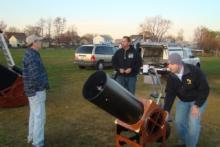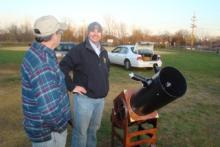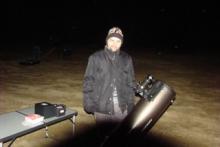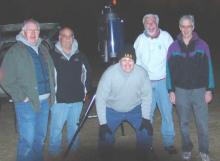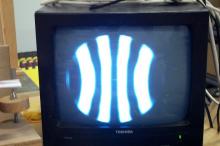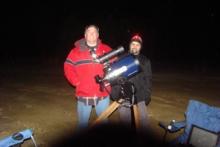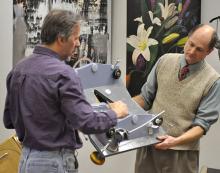Article in the Asbury Park Press on 08/4/07 by Todd B. Bates, environmental writer.
Volunteers combat a different kind of pollution
Posted by the Asbury Park Press on 08/4/07
BY TODD B. BATES
ENVIRONMENTAL WRITER
 Post Comment
Post Comment
John Batinsey thinks light pollution in New Jersey is getting worse overall.
"The whole state is terrible" when it comes to light pollution, which causes glare, energy waste and other problems, said Batinsey, a longtime member of the borough's all-volunteer Environmental Commission.
Municipalities, utilities, businesses and others can reduce light pollution by installing "cutoff" lights, which direct light and control glare, according to Batinsey.
"I think light pollution . . . is an issue that needs to be addressed" because of development in this area, said Mary Kinslow, who chairs the West Long Branch Environmental Commission and co-chairs the 14-town Environmental Partnership.
After joining the Eatontown Environmental Commission about 21 years ago, Batinsey became involved in the outdoor light pollution issue after listening to a talk on the topic in the early 1990s. He began studying the topic and delved into how to fix it "after realizing how badly it was misunderstood," he said.
Light pollution is caused by misdirected and excessive outdoor lighting, according to the 1996 New Jersey Light Pollution Study Commission report on the United Astronomy Clubs of New Jersey Web site.
Batinsey, 75, chaired the commission. Recently, Eatontown Mayor Gerald J. Tarantolo named Batinsey the borough's 2007 volunteer of the year, according to Barbara Weldon, the mayor's assistant.
Aside from glare and energy waste, light pollution results in "light trespass" — a nuisance — and "unnecessary sky glow," according to information Batinsey compiled from the report.
In contrast to cutoff lights, noncutoff lights are bad and "tend to be glary," Batinsey said.
Glare affects the ability of drivers to clearly perceive objects or obstructions, and elderly drivers are especially sensitive to this problem, according to the commission report.
In 1993, Eatontown adopted New Jersey's first comprehensive municipal light pollution ordinance and about 15 municipalities now have similar ordinances, according to Batinsey. The borough last year adopted a second "glare nuisance" lighting ordinance that addresses existing lighting that spills onto roadways and other properties.
Since 1993, "we must have had way over 200 site plans" that have been subject to the Eatontown ordinance, he said.
Almost none of the state light pollution commission recommendations was followed, said Batinsey, a retired accountant who's lived in Eatontown since 1975.
Still, the Garden State Parkway has made numerous lighting improvements, and the state Department of Transportation has "improved its lighting a lot," he said.
"Most of the new freeway and major highway installations" use all the right lights now, he said. "But (the DOT is) not there yet."
Roadway safety is the DOT's first priority, according to DOT spokeswoman Erin Phalon. The agency follows lighting guidelines set by several organizations and has its own design manual, she said.
"We have addressed
many . . . complaints about light pollution," Phalon said.
The DOT plans to redesign the lighting along Route 195 in Monmouth County to address concerns about "the glow caused by our current lighting," she said.
Route 18 in the Eatontown area has the worst roadway lighting available, according to an e-mail from Batinsey.
The DOT will determine whether lighting improvements in that area could reduce light pollution there, Phalon said.
Meanwhile, Jersey Central Power & Light Co. has thousands of misdirected flood lights that the company rents to businesses, according to Batinsey.
"He's entitled to his opinion," JCP&L spokesman Ron Morano said. "We do not offer information about our customers.
"We offer lighting services to our customers that are consistent with utility standards and lighting is also part of our tariff (rates and standards document), which is regulated by the (state) Board of Public Utilities," Morano said.
"Light pollution affects everyone," Batinsey said.
"The key is education," he said. "Let's educate . . . municipal planning board members and . . . even some engineers."
Todd B. Bates: (732) 643-4237 or tbates@app.com


